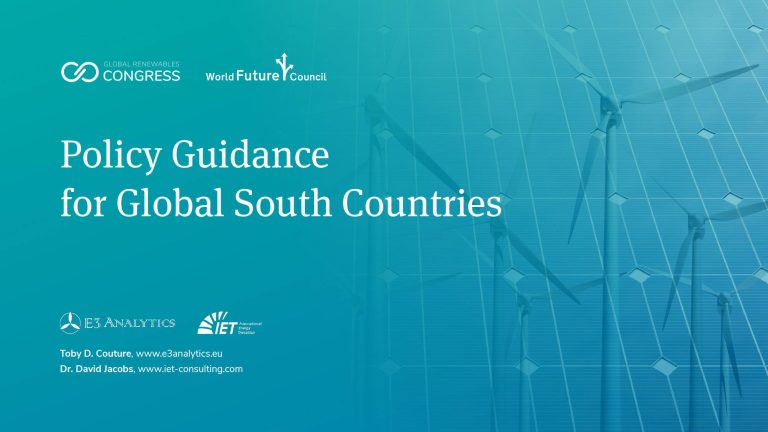As the various examples in the accompanying report show, many countries of the Global South are taking bold steps to accelerate their energy transition. Partnerships (including both South-South as well as South-North) can help countries to realize their ambitions and accelerate their progress toward a clean energy economy. Just Energy Transition Partnerships (JET-Ps) are emerging as a new and potentially powerful framework in this regard, opening up investment as well as new opportunities.
South Africa has established a far-reaching cooperation as part of its recently launched Just Energy Transition Partnership, or JET-P, and has laid out an investment plan that highlights the priority areas it intends to focus on. Such partnerships can help countries to realize their ambitions, unlocking capital and accelerating the transition toward a clean and sustainable energy economy. To help legislators and parliamentarians better understand JET-Ps, this short report lays out a JET-P Compass (see below). A JET-P can be used to support a wide range of country initiatives and efforts related to the energy transition.
Viet Nam has shown that with the right policy frameworks, rapid renewable energy investment can occur, catalyzing significant changes within a short period of time. Viet Nam is now also exploring establishing its own JET-P, following the lead set out by South Africa. Both China and India are showing that it is now possible to drive substantial change in the transportation sector as well, as electric mobility provides cost-competitive, zero-emission alternatives in two-wheelers, three-wheelers, as well as for traditional cars, trucks, and buses. Finally, the case of the Philippines shows how broad stakeholder engagement and integrated planning can create better conditions both for renewable energy project development as well as for the development of the transmission network, reducing conflicts over land-uses and fostering greater engagement with local communities.
With the right policy support, these case studies indicate that countries in the global south can significantly accelerate their progress toward a clean energy economy; in the process, governments can achieve multiple important objectives including greater energy security, more local job creation, improved health and air quality, better conditions for workers, all while attracting greater foreign and local investment.
To be successful JET-Ps need a strong regulatory framework, sustained political will, and a clear vision for the priority sectors. The figure below introduces a JET-P Compass that brings these elements together into a simple step-by-step framework.
JET-Ps are poised to become a powerful vehicle to advance the energy transition in the Global South. For more information on policies and practical examples, see the main report.

